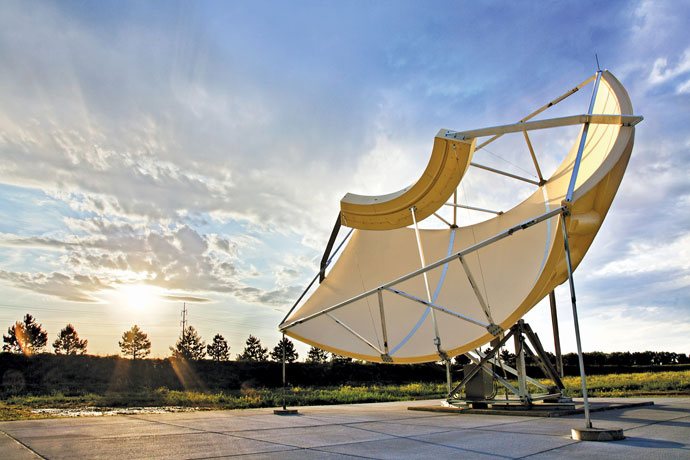Long before Facebook, Google and Yahoo became household names, the central U.S. was laying the foundation for what would become the most vital infrastructure of the world’s three biggest Internet companies.
Large, enterprise data centers – the Holy Grail of the electric utility industry – are the mission-critical facilities of the World Wide Web’s “Big Three,” and increasingly this triumvirate is finding its field of dreams in Iowa and Nebraska.
All three are investing heavily into huge data center operations in multiple locations around the country, and in some cases around the world, but it’s safe to say that right now they aren’t finding any better landing sites than those located in America’s bread basket.
“Facebook has been growing very rapidly over our nine-year history. We have for the last four years been looking at, based on that growth trajectory, transitioning to a model where we design and build our own data centers and design all the hardware that goes into them.“
— Michael Kirkland, Facebook spokesman
In the same fields that just a few years ago farmers raised corn or fed cattle, engineers and developers are building the energy-intensive physical plants that will house the 21st century architecture of the Internet.
Why they came to Iowa and Nebraska is fairly simple. Both states offer ample power, low electric rates, superior telecommunications infrastructure, generous incentives, a highly skilled work force, and government leaders that are solidly pro-business.
When Facebook chose Altoona, Iowa, on April 23 for a $300-million data center investment, the announcement marked a significant win for Iowa Gov. Terry Branstad and his team at the Iowa Economic Development Authority.
“Today’s announcement further solidifies Iowa’s position as a destination for tech companies – from major data center operations like Facebook’s to the innovative startups we continue to see popping up around our state,” Gov. Branstad said on April 23. “Our productive work force and our overall cost of doing business help us to win great projects like this.”
Iowa helped lower Facebook’s cost of doing business by providing $18 million in tax benefits through the High Quality Jobs program. To receive the incentives, Facebook must create at least 31 new jobs at a qualifying wage of $23.12 per hour and invest a minimum of $299.5 million into the project.
Local incentives from the city of Altoona were also approved for the deal code-named Project Catapult on the day of the project announcement.
“We’re thrilled to become a part of the Altoona community, and especially appreciative of all the partners who helped make this happen,” said Jay Parikh, vice president of infrastructure engineering for Facebook. “Facebook’s mission is to connect the world. Thanks to Iowa, we’re building the global infrastructure to bring the next billion people online.”
The 194-acre (78-hectare) site selected in Altoona could accommodate up to two additional data center buildings in the future, Facebook executives said. The first building will be a 476,000-sq.-ft. (44,220-sq.-m.) facility that will be constructed to LEED-Gold standards.
Why Facebook Keeps Expanding
The new data center will be among the most technologically advanced and energy efficient of its kind, Facebook officials said, noting that the facility will feature an outdoor-air cooling system and the latest in Open Compute Project server designs.
“We are expanding at all three of our sites in the U.S. to meet increased demand. We have three owned and operated sites plus several co-location facilities that are located elsewhere around the country.“
— Chuck Whitney, senior manager of data center operations for the central U.S. and Latin America for Yahoo
This is the fourth major data center project for Facebook in the world, joining existing developments in Prineville, Ore.; Forest City, N.C.; and Lulea, Sweden.
The total employment impact in Iowa is likely to be greater than what was initially reported. Facebook currently employs 70 full-time workers in Prineville and 80 in Forest City. More than 2,500 construction workers were involved in the building of the Prineville data center.
Michael Kirkland, spokesman for Facebook, says the company’s site selection strategy for data centers follows a rigorous and well-tested process.
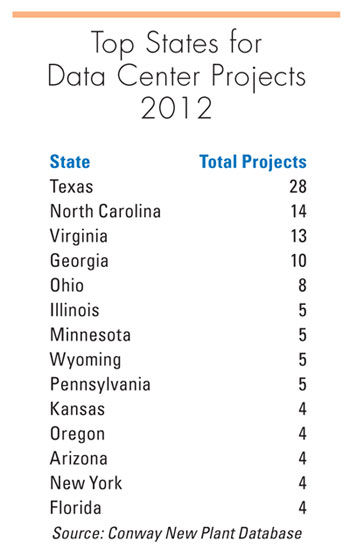
“We have to plan these projects very far in advance,” he says. “Typically, the site selection team identifies sites where we might need to place data centers. We evaluate multiple sites using a huge list of criteria – good access to fiber and power; presence of shovel-ready sites; access to renewable energy like wind power; support from local officials; access to quality labor of technicians and other skilled workers; and, of course, access to reliable, redundant power at a competitive rate.”
Before Facebook selected Altoona, a suburban city on the northwest corner of Des Moines, “it was very much a balancing act of all the different kind of criteria,” says Kirkland. “It was a very difficult choice between two or three very strong candidates.”
Nebraska reportedly was in the running for the project, but Facebook officials would not say which criteria gave Iowa the leading edge. Some have speculated that Iowa’s leadership position in wind energy – third in the nation in total power generated from wind – may have put Iowa over the top. Facebook has stated that it wants to purchase 25 percent of its power from renewable energy sources by 2015.
Whatever the reason, it’s a safe bet that this won’t be Facebook’s last data center project on a greenfield site. “Facebook has been growing very rapidly over our nine-year history,” says Kirkland. “We have for the last four years been looking at, based on that growth trajectory, transitioning to a model where we design and build our own data centers and design all the hardware that goes into them. Prineville is our first owned data center where we built it from the ground up.”
The savings in going from leased to owned space for Facebook was substantial. “In April 2011, when we turned on Prineville and compared it to our leased facilities at the time, we found that it was 38 percent more energy efficient at 24 percent lower costs,” Kirkland says. “We have increased our efficiencies since then.”
Facebook’s appetite for data is insatiable. Some 1.11 billion people log in to Facebook – the world’s largest social networking website – every month. More than 2.45 billion content items are shared on Facebook every single day.
More than 10 billion messages are sent on Facebook daily, and 350 million new photos are uploaded to Facebook pages each day.
“The actual data center facilities will be built offsite and then shipped to the location of the data center. They are the size of a semi-trailer. They are built to take advantage of the U.S. highway system.“
— Scott Orr, vice president of public affairs for Fidelity Investments
“We store more than 100 petabytes [100,000 terabytes] of photos and video for our users,” says Kirkland. “That data store is growing by seven petabytes a month.”
To put that into perspective, one terabyte equals 1,000 gigabytes of data. The first one-terabyte hard drive did not exist until 2007.
Escalating demand means that Facebook must constantly upgrade its infrastructure. “Our team tries to plan for the future,” Kirkland adds. “We are continually evaluating multiple potential locations in regions all around the world. We did want to have capacity in the central U.S. We already had capacity on the West Coast in Oregon and on the East Coast in North Carolina and Virginia.”
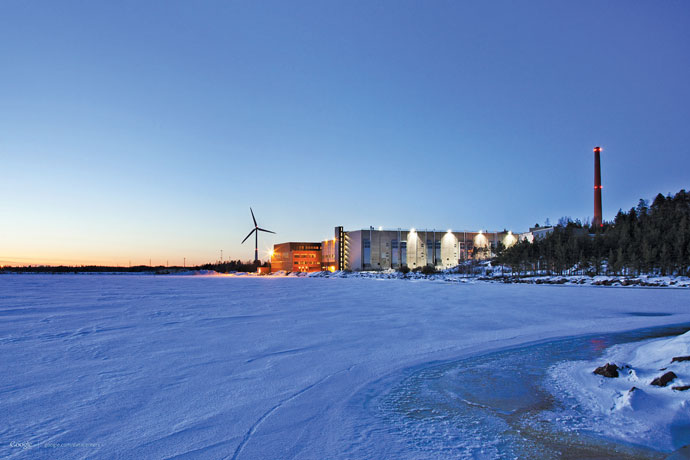
Located on the shores of the Gulf of Finland, this Google data center in Hamina, Finland, is one of seven large data centers that Google owns and operates outside the U.S.
Photo courtesy of Google
Facebook maintains several Hadoop clusters, the largest of which is more than 100 petabytes in size. More than 500 terabytes of new data is ingested into these clusters every day.
“Our data warehouse has grown nearly 4,000 times in the last four years,” says Kirkland.
For now, he adds, “we are in the process of provisioning the second buildings in Oregon and North Carolina, and we are getting ready to turn on the first data halls in Sweden. We will break ground in Iowa in the next month or two.”
Google Calls Council Bluffs
Both Google and Yahoo are also experiencing unprecedented levels of user demand for data, and like Facebook, they are spending big bucks on expanded data center facilities in the former cornfields of Iowa and Nebraska.
Google, the world’s largest search engine, confirmed in April that it will invest $400 million to expand its existing data center in Council Bluffs, Iowa, just across the Missouri River from Omaha, Neb. The Google site is 126 miles (202 km.) from the Facebook site in Altoona.

Chuck Whitney, senior manager of data center operations for the central U.S. and Latin America for Yahoo
Google, which handles more than 5 billion Internet searches a day from users around the world, originally spent $600 million on the Council Bluffs site in 2009 before adding another $300-million site across town in 2012. The Southlands site in Council Bluffs received an additional $200-million investment from Google last November.
With the latest announcement, Google’s total capital investment into its two sites in Council Bluffs will be pushed to $1.5 billion. More than 130 full-time jobs have been created to date by Google in the Iowa community.
The company’s latest expansion announcement came just two days after it revealed that it would invest an additional $600-million into its existing Caldwell County data center in Lenoir, N.C.
Google also operates data centers in Berkeley County, S.C.; Douglas County, Ga.; Mayes County, Okla.; The Dalles, Ore.; Quilicura, Chile; Hong Kong; Singapore; Taiwan; Hamina, Finland; St. Ghislain, Belgium; and Dublin, Ireland.
Google’s media office notes that that Council Bluffs provides “the right combination of energy infrastructure, developable land, and available work force for the data center.”
Microsoft added to the Iowa bonanza on June 21 by announcing a $677.6-million expansion of its existing data center in West Des Moines. The project, which is expected to create 29 new jobs, is eligible to receive up to $20 million in tax credits.
U.S. Still World’s Safest Data Center Location
The United States has retained its status as the lowest-risk destination in the world for building and operating data centers, according to a survey by Cushman & Wakefield, hurleypalmerflatt and Source8.
The report, released in May, evaluates risks that are likely to affect the successful operation of data centers in the world’s 30 most important markets. The U.S. leads the 2013 Data Center Risk Index with a score of 100, followed by the UK, Sweden, German and Canada in the top five.
“In the U.S., factors such as robust Internet bandwidth, capacity and connectivity and stable power costs contribute to its top ranking,” said Jeff West, director of Cushman & Wakefield’s data center research in the Americas. “Throughout the Americas, secondary and maturing markets hold an abundance of potential.”
Tenant activity in major U.S. markets is showing renewed vigor, particularly in the San Francisco Bay Area and Northern Virginia, says the report. Loudoun County, Va., for example, continues to be a national leader with 8 million sq. ft. (743,200 sq. m.) of data center space either existing or under development right now.
Greater Toronto makes up the majority of the Canadian data center market, which ranks as the fifth-safest in the world, the report states. “Demand has been strong in all major Canadian metros for some time,” the study notes.
The top 10 data center markets in the world, according to the report, are as follows:
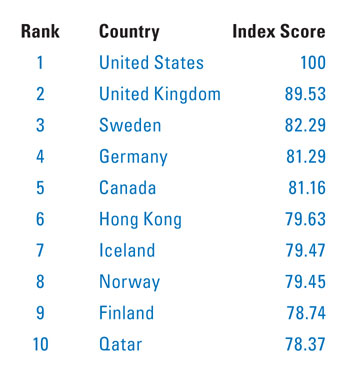
Yahoo, meanwhile, continues to expand the data center that it first opened in La Vista, Neb., near Omaha in early 2010. The original $100-million investment included a data center and customer-care center that created a total of 200 jobs.
Yahoo acquired an existing 300,000-sq.-ft. (27,870-sq.-m.) shell building on a 24.3-acre (9.8-hectare) parcel in La Vista in 2008 following a 17-state site search. Today, the site employs 250 workers and, with the expansion, the work force could grow to 270.
The Nebraska site is unique in the Yahoo system because it also serves as the main manufacturing plant for the Internet giant. Yahoo now assembles at its La Vista facility all of the servers that go into the firm’s other two main data centers in Quincy, Wash., and Lockport, N.Y.
Nebraska passed a special law last year that exempts Yahoo from paying sales tax on computer hardware that it assembles and ships out of state to its own data centers.
“We are expanding at all three of our sites in the U.S. to meet increased demand, says Chuck Whitney, senior manager of data center operations for the central U.S. and Latin America for Yahoo. “We have three owned and operated sites plus several co-location facilities that are located elsewhere around the country.”
More than 700 million unique users log onto a Yahoo site every month, and more than 105 million people around the world use Yahoo email daily. About 35 million hours are spent each day by users accessing, composing and sending Yahoo emails.
“Since launching the new Yahoo Mail for iOS, Android and Windows 8, daily active users on our apps are up more than 50 percent due to our newfound presence on multiple platforms,” says Yahoo spokesperson Suzanne Philion.
Yahoo’s recent $1.1-billion acquisition of social media upstart Tumblr is expected to add considerably to Yahoo’s data center services demand.
Whitney notes that Yahoo’s primary site criteria include “architectural and structural requirements, geotechnical and environmental issues, power availability and cost, flood plain factors, zoning requirements, available land, and associated real estate and development costs.”
Fidelity Debuts New Model
Tim O’Brien, economic development manager for the Omaha Public Power District, says that specialized incentive programs designed to benefit data centers have made a world of difference in Nebraska.
“We have changed the Nebraska Advantage program three times specifically for data centers,” he says. “We are a leader in qualified sites. Nebraska has funded four sites for future data center development in Fremont, Kearney, Aurora and South Sioux City. The big three location factors for this industry are taxes, power rates and the presence of building-ready sites. From a pure business-climate standpoint, we are now as competitive as any state in the nation for data center projects.”
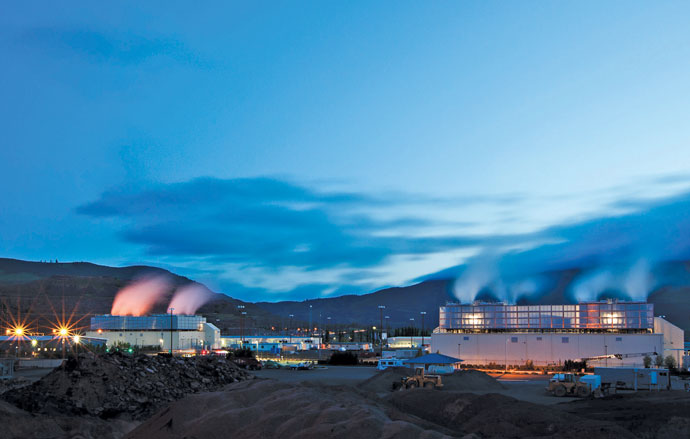
Google maintains a sizable data center in The Dalles, Ore., which benefits from access to inexpensive power courtesy of The Columbia River.
Photo courtesy of Google
Nebraska’s power rates typically are 20 percent lower than the national average. “For data centers we are in the 5.5-cent-per-kWh range depending on load profile,” says O’Brien.
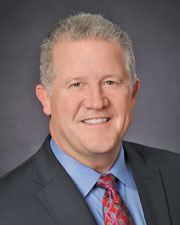
Scott Orr, vice president of public affairs for Fidelity Investments
Data center projects that invest at least $200 million and create at least 30 new jobs in Nebraska are eligible to receive a personal property tax exemption for 10 years, along with a sales tax exemption and a real property tax refund, says O’Brien.
As a result, Nebraska is reaping a windfall of data centers. Fidelity Investments, for example, is moving forward with a $200-million data center project in Papillion in Sarpy County, near Omaha.
Code-named Project Photon, the installation represents the next generation of data center technology for the global financial services company. Set to be operational in 2014 and employ 35 people, the facility will use Fidelity’s new CenterCore building model.
“The actual data center facilities will be built offsite and then shipped to the location of the data center,” says Scott Orr, vice president of public affairs for Fidelity. “The individual units are assembled in North Carolina. They are the size of a semi-trailer. They are built to take advantage of the U.S. highway system. They are shipped and then attached on site in individual pieces. It is like adding a component of a building.”

Facebook’s data centers in Lulea, Sweden, and Forest City, N.C., are among the busiest in the world, as the global social media giant now transmits more than 10 billion messages and uploads 350 million new photos every day.
Photos courtesy of Facebook
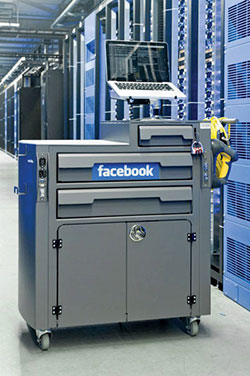
The modular data centers come equipped with all heating and cooling infrastructure “already plugged in,” says Orr. “There is a core building – a base building – that is being built on site in Papillion. Once that core facility is in place, CenterCore will add the actual data center capacity that is needed to the site.”
Orr notes that Fidelity is taking the lead in “the evolving technology of data centers. Fidelity can create much more efficient data centers than we did three years ago.”
Orr says Fidelity likes the Greater Omaha area for several reasons. “It is the center point of the country and it has geological stability,” he says. “Many robust power-generating companies are there to ensure that you will have affordable and reliable power. A qualified work force is there too. They have a handle on training and making the labor pool available to data center operators like Fidelity.”
